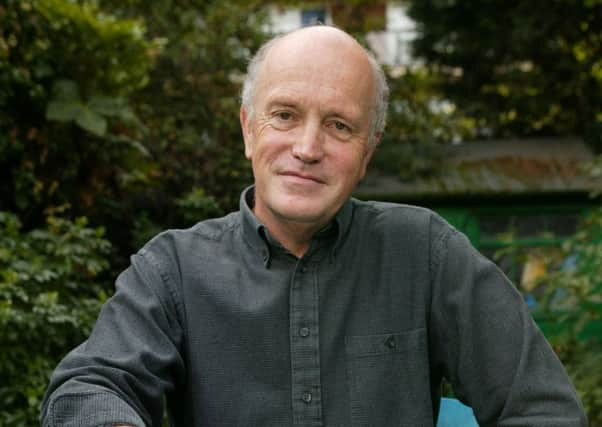Book review: London Overground by Iain Sinclair


London Overground: A Day’s Walk Around The Ginger Line
Iain Sinclair
Hamish Hamilton, £16.99
‘Ruins become runes.” “Within days, the labyrinthine footprints, like blow-ups of a future crime, were gone.” “I sleepwalked through streets so familiar they felt like sinister fakes, replicas of themselves occupied by new tribes.” “Drunk on apocalypse.” There is only one writer who could have penned those sentences and fragments: the inimitable Iain Sinclair.
I have been reading Sinclair since the early nineties. I still remember the jolt of encountering his novel about Hawksmoor churches, Jack the Ripper and second-hand book dealers, White Chappell, Scarlet Tracings. Since then he has become better known for his “documentaries” – the 12 walks that comprise Lights Out For The Territory and the circumambulation of the M25 in London Orbital being the most famous. These “psychogeographies” have charted the changes in London from Thatcher onwards. With every new foray I have worried that he must be subject to the law of diminishing returns; that the stylistic signatures – the occultism, polemic, the crashing together of Anglo-Saxon slang and Latinate precision – might begin to appear to be an imitation of itself. But, miraculously, no.
Advertisement
Hide AdLondon Overground begins with a piece of sly authorial misdirection. The opening chapter promises that Sinclair will be undertaking a reiteration of the most famous writerly pilgrimage, Chaucer’s journey to Canterbury. But the digression comes quickly. A chance encounter with a “boho rabble”, including a man in a white goat mask, encourages Sinclair to explore a different London – what the partygoers refer to as “The Ginger Line”. The full circle of the London Overground opened in 2012, and Sinclair decides to walk its 35 miles and 33 stations in a single day, from Haggerston, Wapping and Peckham Rye to Willesden Junction, Hamsptead Heath and Camden Town. He does so in the company of the artist Andrew Kötting, with whom he collaborated on the film Swandown, where, in protest at the Olympics, the pair took a swan pedalo 160 miles up the Thames from Hastings to Hackney. For all the humour – sometimes dark, sometimes wry, sometimes unintentional – London Overground is a vivisection of London under Boris Johnson. Indeed, the mayor makes a cameo appearance towards the end, “childishly greedy for credit, loud in his approval of the viral pace of transformation of an ugly junction into a thriving nest of internet hornets”.
If the earlier psychogeographies tended to explore the hidden histories of London, the psychic scars and occluded stories, Sinclair’s more recent work has tended to interrogate the official narratives. A “heavy presence” in “a loose designer suit that gave off sparks as he moved” and whose “tongue is blistered in diamonds” interrupts a talk on local heritage to proclaim aggressively “the rescue of the old shitheaps”. The insidious renaming of places to aid gentrification, the ubiquity of artisan breads and microbreweries, are all targets for Sinclair’s ire. “The casualties of cuts and expulsions,” he writes, “are barely tolerated, as invisibles, in the microclimate of station-confirming blocks with pointless water features and thrown-up-overnight estates.” All that was distinctive about different areas of London is swamped by the homogenous. “As ever with these colonised crossroads, the theoretical centre doesn’t hold; it’s an illusion, a courtesy title… The centre has no centre, it’s all corridors leading to nothing. A chasm of prostituted windows and secure doors, goods that are like advertisements for the digital versions of themselves”.
You can hear the almost audible relief when Sinclair finds an area without the Barclays Boris Bikes. The arbitrary nature of the route does throw up some surprises. There is a haunting section on Brompton Cemetery (“the dead are a logistical nuisance in an expanding city”, he notes) and despite the rhetoric of the developers they are rarely far from prisons and football stadia (“large, unexplained oval structures left empty for much of the time. Usually unfinished in appearance”) with their hints of violence. The museums are mostly closed, and the libraries under threat.
Cultural geography has always meant as a much as physical geography in these works, and the same holds true here. There are lengthier disquisitions on Leon Kossoff and Anthony Gormley, and an outstanding comparison between Sigmund Freud and Sherlock Holmes, with the bizarre revelation that Freud once toyed with pushing a rival off a ravine, Reichenbach Falls-style. There is a reminiscence of Angela Carter, who has appeared in works by Sinclair before, but he has never been as personal about her influence.
JG Ballard makes a return appearance. Sinclair manages to convince the reader there is something supernatural or prophetic about his work, even unspooling a coincidence (the name of a Ballard protagonist is the same as that of a West London square where a solicitor started firing a shotgun) so that it seems like an arcane synchronicity. Along the way Muriel Spark, Arthur Rimbaud and Samuel Beckett; Princess Diana, RD Laing and the Kray Twins flit like spirits in a modern mythology.
For the aficionado, London Overground will deliver all the delights of Sinclair’s edgy and hard-edged prose; for those who do not know his work it is an accessible starting point for one of the most rewarding oeuvres in 21st century literature. I hope that he does get to Canterbury next time.